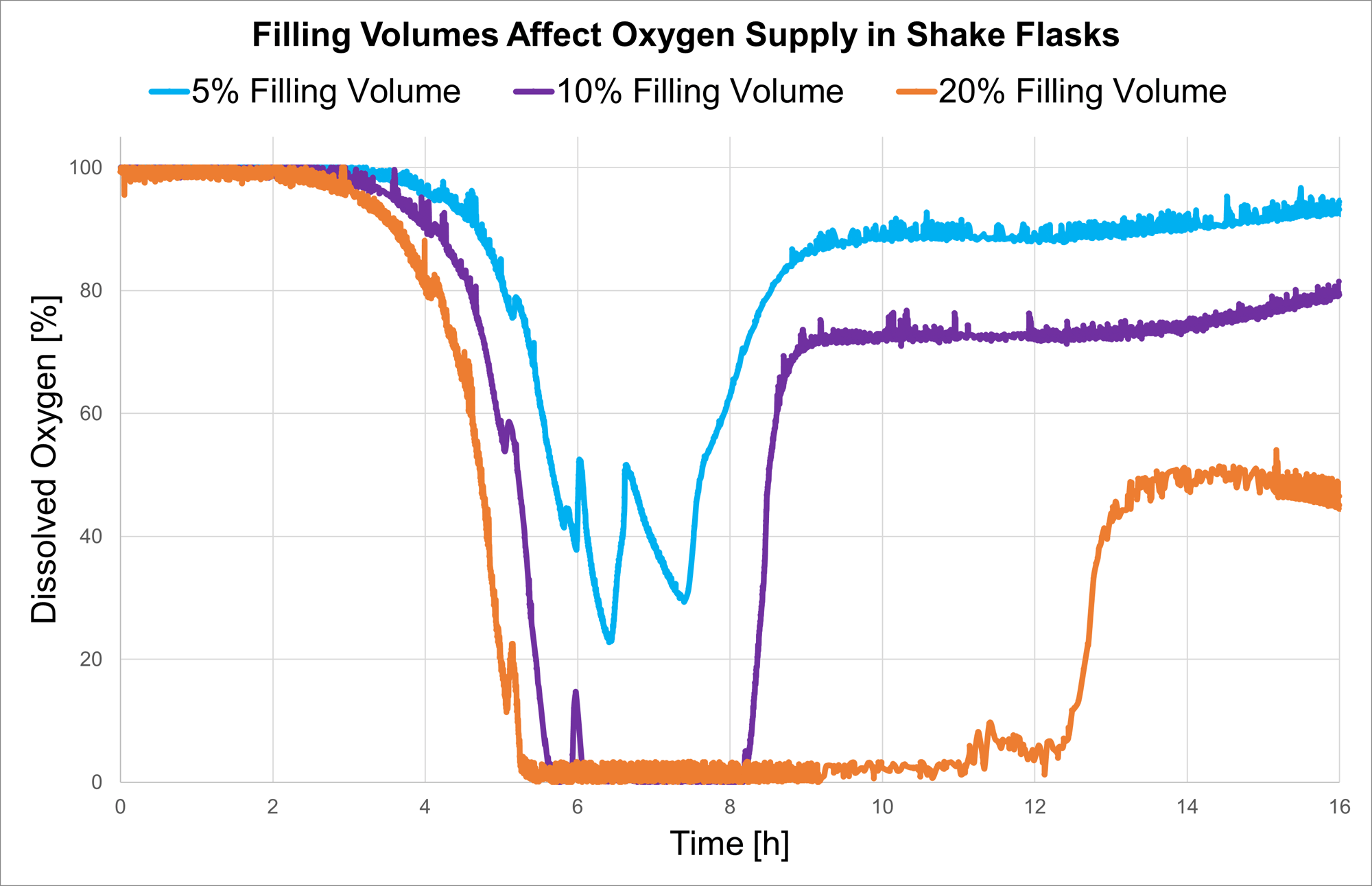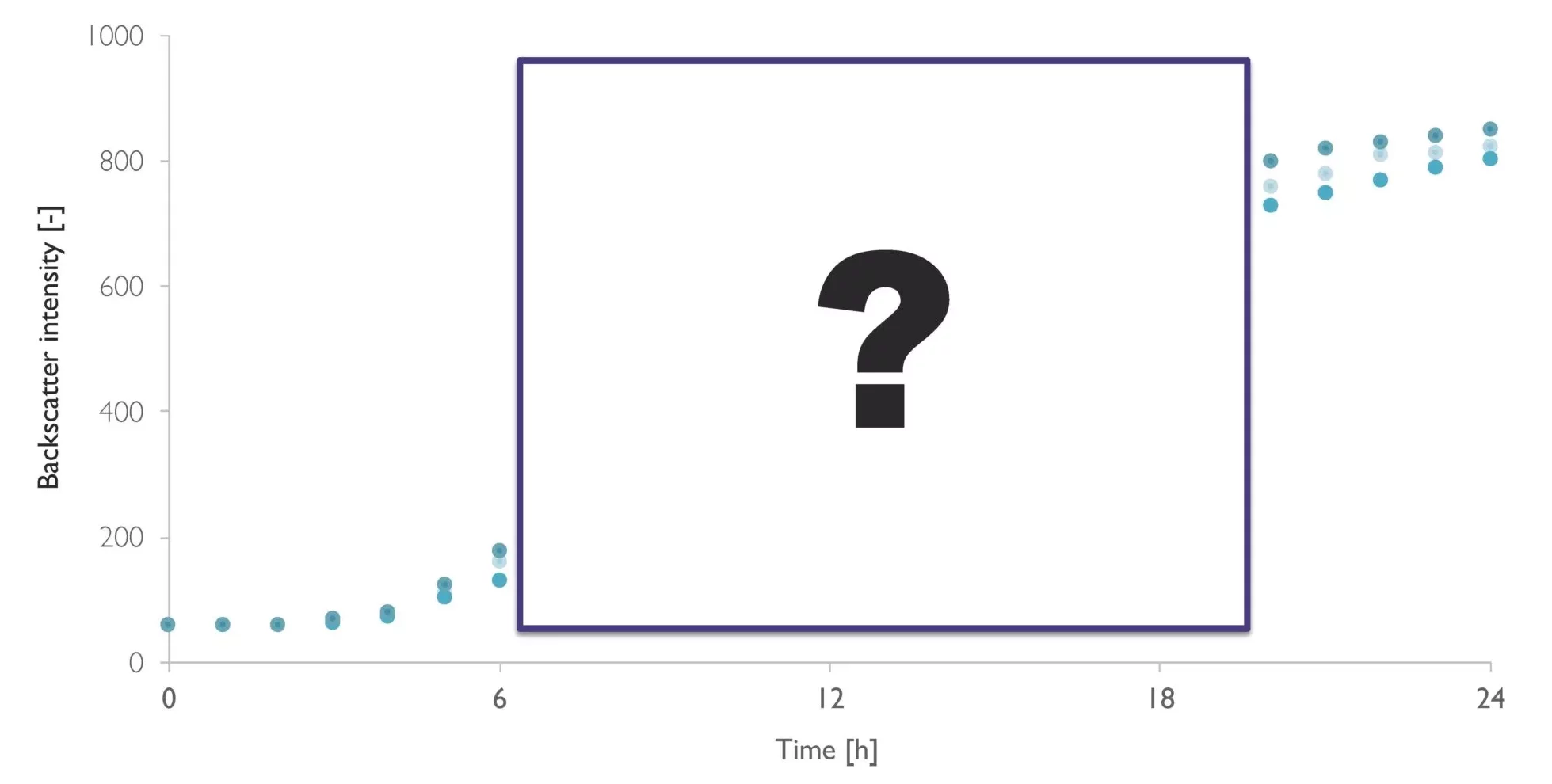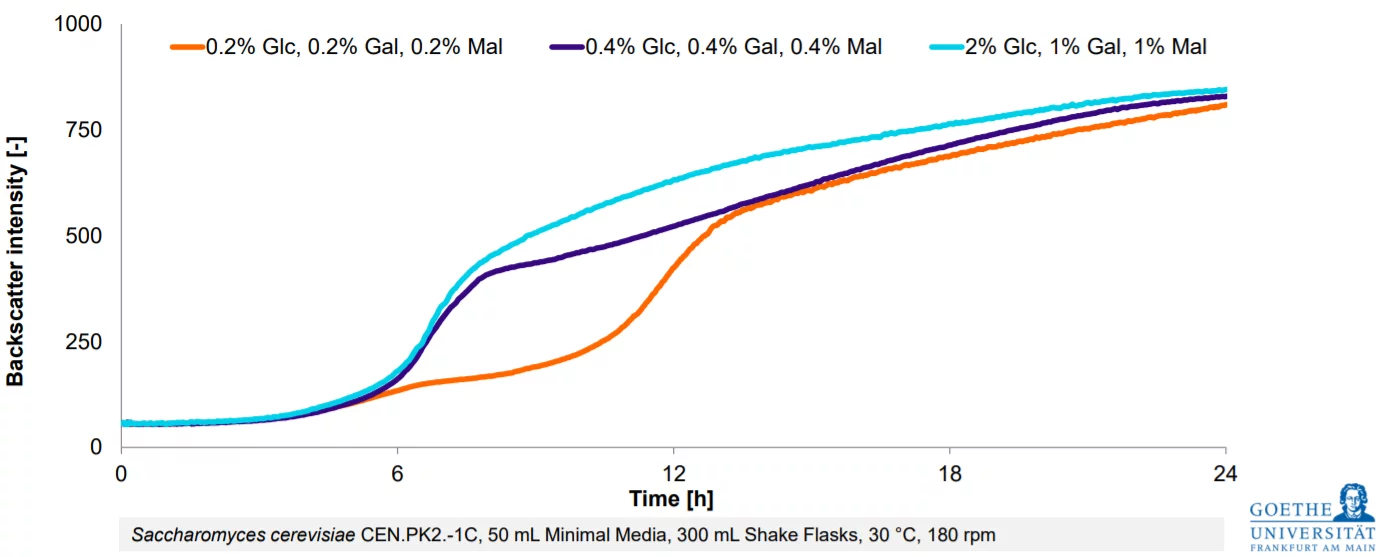Data Spotlight
The Effect of Filling Volumes in Shake Flasks on Oxygen Supply in E.coli Cultures
Background
Dissolved oxygen plays an essential role for aerobic cultivations, and oxygen limitation and carbon dioxide accumulation are major concerns for studies involving shake flask cultures. Compared to bioreactors, which can usually be gassed with pure oxygen, the oxygen supply in shake flasks is often more critical. Here, the shaking movement exposes the medium to the surrounding air, increasing the oxygen transfer rate from air to liquid.
Several factors influence the oxygen supply in shake flasks, including the shaking speed and diameter, closing types, vessel material, the usage of baffled or non-baffled flasks, and the filling volume.
While scientists are generally aware of these effects, dissolved oxygen is still rarely measured in shake flasks. Hence, oxygen limitations due to non-optimal process conditions often go undetected.
In this study, the effect of different filling volumes on oxygen supply was investigated. For this, three Escherichia coli cultures grown in different volumes of LB medium, corrresponding to 5%, 10%, or 20%, were compared. For all cultures 250 mL non-baffled shake flasks were used. The dissolved oxygen concentration was measured online with the DO Sensor Pills.

E.coli cultures grown in 12.5 mL, 25 ml, or 50 mL LB medium in a 250 mL shake flask. The different filling volumes correspond to 5%, 10%, or 20%, respectively. Cultures were shaken at 30°C and 200 rpm. Dissolved oxygen was monitored online with the DO Sensor Pills in tandem with the Multiparameter Sensor, revealing oxygen limitations for cultures grown in higher filling volumes of 20%, and (less pronounced) 10 %.

Materials & Methods
E.coli cultures were innoculated from precultures to an initial OD of 0.5. Main cultures were supplied in shake flasks with three different filling volumes (12.5 mL, 25 mL, and 50 mL) corresponding to 5%, 10%, or 20% of a 250 mL non-baffled glass shake flask.
In each flask, a DO Sensor Pill was inserted and flasks were placed on top of the Multiparameter Sensor. Flasks were shaken at 200 rpm at 30°C. With the DOTS Software, DO Monitoring was started and continued throughout the entire fermentation of 16 hours.
Conclusion
Predicting the dissolved oxygen concentration in shake flask cultures is a significant benefit for an optimized design of experiments as this can prevent failures related to oxygen limitations. The filling volume has a significant impact on oxygen supply in shake flask cultures. With the help of DO Sensor Pills and the DOTS Multiparameter Sensor, this effect was nicely visualized and revealed that filling volumes of more than 10% can already lead to pronounced oxygen limitations for a prolonged duration in non-baffled shake flasks for E.coli cultivations. Filling volumes as low as 5% therefore seem beneficial for shake flask cultures to prevent oxygen limitation.
More
Interested in real-time dissolved oxygen monitoring in shake flasks? Check out the Application!
Want Results Like These?
We will work with you on a solution that works best for your application.
From Estimation To High-Resolution Growth Curves


Customer Success Stories
.png)
-Kitana Manivone Kaiphanliam (Washington State University)
